|
|

Cave Dwellings
The cave dwellings are the most famous by the general public. They are like simple houses but dug in the rock. You can find such houses in the region of Loire valley, Perigord, or Provence. These houses were occupied by the poor and also by the rich. Some cave dwellings have only one room but other seem like a castle. ...
Next...
|
|
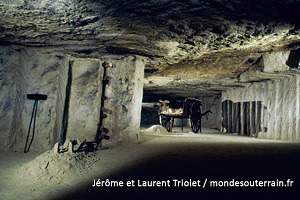
Underground Quarries
The underground quarries are often in labyrinthine network with long branches. Man has dug the cavities in order to take building stone. The underground quarries are in general large, with irregular shape and without any facilities dug on the walls. The little rural quarry made in order to take building stone can have only one hoisting shaft and some cavities around. On the contrary, the quarries used for big constructions like castles or cathedrals can stretch as far as more than 1 km. In some French regions like Loire valley and Bordeaux, men have been digging the rock during several centuries and they left huge underground areas.
Next...
|
|
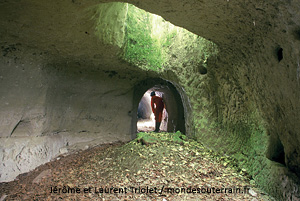
Underground passages (souterrains aménagés)
The underground passages are our principal study.
Underground, it means that man had dug it in the ground, and the underground passages are built with facilities in the walls. These facilities were made in order to use them during the occupation of the cavity. The underground passages are often galleries and little rooms making a network more or less large. They are totally made in the rock. Their real function remains relatively difficult to explain regarding their remains discovered today.
Nevertheless we can identify 2 groups : the underground refuges (souterrains-refuges) and ring-shaped underground (souterrains annulaires).
Next...
|
|
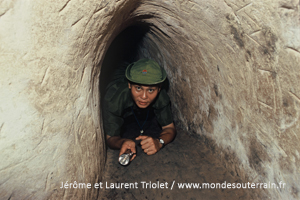
War tunnels
The most famous examples of war tunnels are located in Southern Vietnam. In the region of Saigon, there is an impressive network of tunnels dug mainly during the Vietnam War. Around Cu-Chi and in the Iron Triangle, there might have been up to 300 km of tunnels with a capacity of 16 000 people. The corridors of Cu-Chi tunnels are very low (0,6 to 1,1 m high) and narrow (0,5 to 0,7 m wide), each section is several hundred meters long. They often change direction, are divided into numerous branches and arranged on 2 or 3 levels. Hatches carefully disguised in the ground of the forest closed the entrances of the tunnels. This tunnel network was connected ...
Next...
|
|
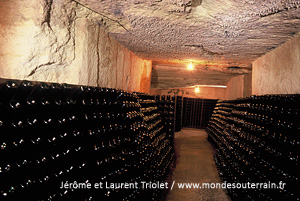
Cellars
The cellar is used for stocking the goods. It is built like wide gallery without any facilities dug on the walls. The famous wine cellars are settled in big place made by the underground quarries. ...
Next...
|
|
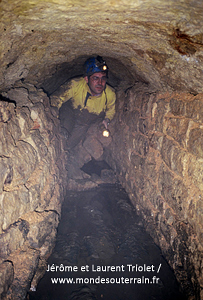
Underground Aqueducts
The underground aqueducts, date from the roman period, and they were used for the supply of water to large towns. They are like long galleries wide from 0,5 to 1,5 m and high from 1 to 2 m. Their tunnels correspond to underground parts and also some air parts. All along the aqueducts there are access wells (about each 20 m). ...
Next...
|
|
|
© Jerôme et Laurent TRIOLET 2026 - All rights reserved
Copyright Information ©
 |